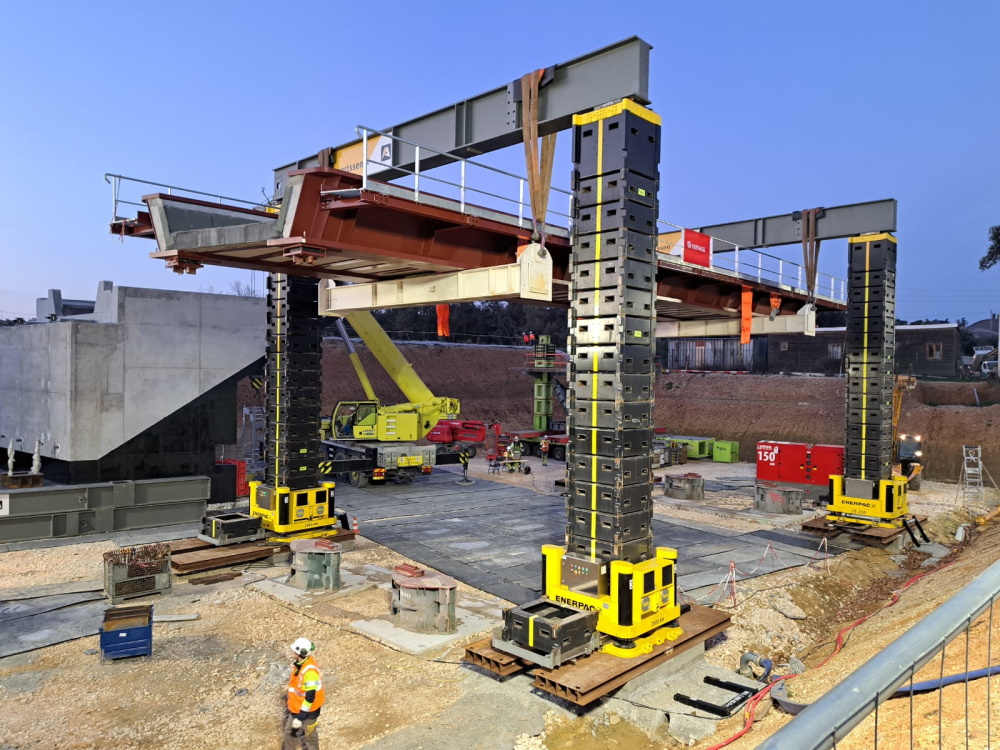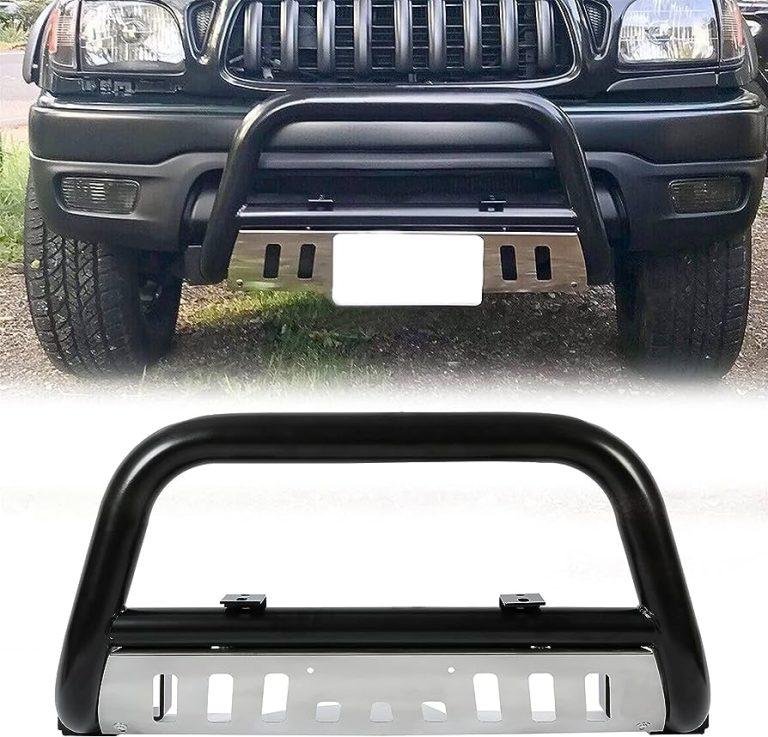Concrete for a 2 post car lift should be at least 4 inches thick to ensure stability and proper weight distribution. With a 4-inch thickness, the concrete will be able to withstand the weight of the car lift and provide a solid foundation for safe operation.
Whether you are installing a new car lift or replacing an existing one, it is important to consult the manufacturer’s specifications for the recommended concrete thickness. By following these guidelines, you can ensure the longevity and safety of your car lift and prevent any potential accidents or structural damage.

Credit: blog.enerpac.com
Importance Of Proper Concrete Thickness
Proper concrete thickness is crucial for a 2 post car lift to ensure stability and safety. It needs to be thick enough to support the weight of the lift, vehicle, and additional load. Correct thickness will prevent cracking and damage to the concrete, ensuring a reliable and long-lasting car lift installation.
The proper concrete thickness is crucial when it comes to installing a 2 post car lift. It not only ensures the stability and safety of the car lift but also helps prevent concrete cracking and damage, ultimately extending the lifespan of the equipment.
Let’s dive deeper into each of these important factors:
Ensuring The Stability And Safety Of The Car Lift:
- Adequate concrete thickness provides a solid foundation for the car lift, ensuring its stability during operation.
- It prevents any unwanted movement or shifting that could compromise the safety of the lift and the vehicles it supports.
- The recommended minimum concrete thickness for a 2 post car lift is typically around 4 inches, but it may vary depending on the lift’s weight capacity and specific manufacturer guidelines.
Preventing Concrete Cracking And Damage:
- Insufficient concrete thickness can lead to cracking and damage over time, compromising the structural integrity of the lift and the floor.
- Concrete cracks can cause the lift to become unstable, potentially posing risks to both the vehicle and the individuals operating it.
- A thicker concrete layer acts as a barrier against cracks and helps distribute the load evenly, preventing potential damage.
Extending The Lifespan Of The Equipment:
- Adequate concrete thickness is essential for the longevity of the car lift, as it reduces stress on the lift’s components, such as the columns and the lifting arms.
- The increased stability provided by proper concrete thickness minimizes wear and tear, prolonging the lifespan of the lift.
- It also reduces the need for costly repairs or replacement, making it a cost-effective investment in the long run.
Proper concrete thickness is a critical aspect of installing a 2 post car lift. By ensuring stability, preventing concrete cracking and damage, and extending the equipment’s lifespan, you can create a safe and durable working environment for your automotive needs.
Factors To Consider For Determining Concrete Thickness
Determining the appropriate concrete thickness for a 2 post car lift involves considering various factors such as lift capacity, type of vehicles, and existing flooring conditions. Evaluating these aspects ensures safe and efficient operations without compromising structural stability.
How Thick Should Concrete Be For A 2 Post Car Lift?
Installing a car lift in your garage can expand your working space and make vehicle maintenance a breeze. When it comes to determining the thickness of the concrete needed for a 2 post car lift, several factors come into play.
Let’s take a closer look at these factors to ensure a safe and reliable setup.
Weight Capacity And Dimensions Of The Car Lift:
- The weight capacity and dimensions of the car lift are crucial for determining the thickness of the concrete foundation. Consider the maximum weight the lift can handle and the measurements of the lift’s base.
- Based on the manufacturer’s specifications, calculate the point load, which is the force exerted on a specific point. This information will help determine the suitable thickness of the concrete.
Construction Quality And Soil Compaction:
- The quality of the construction and adequate soil compaction are essential for the stability and performance of the car lift foundation.
- Ensure that the garage floor is level and free from any cracks or damage before installing the car lift.
- Proper soil compaction is necessary to prevent settling or shifting of the concrete over time. This can be achieved by compacting the soil layers using mechanical equipment.
Type And Strength Of The Concrete:
- The type and strength of the concrete used for the car lift foundation are critical considerations.
- The most commonly used concrete mix for car lift installations is 2,500 to 3,000 psi (pounds per square inch).
- It may be necessary to consult with a structural engineer or a professional contractor to determine the appropriate concrete type and strength based on your specific requirements.
Placement And Curing Methods:
- Correct placement and curing of the concrete are vital for its overall strength and durability.
- Ensure that the concrete is poured evenly and at the recommended thickness.
- Adequate curing time is necessary to allow the concrete to gain strength. Follow the curing guidelines provided by the manufacturer or consult with a professional.
By carefully considering these factors, you can determine the appropriate thickness and specifications for the concrete foundation of your 2 post car lift. This will ensure a safe and long-lasting installation that can withstand the weight and demands of your vehicles.
Recommended Concrete Thickness For 2 Post Car Lifts
The recommended concrete thickness for a 2 post car lift is typically 4 inches. This ensures stability and safety during vehicle lifting and maintenance. It is important to follow these guidelines to prevent any structural issues or accidents.
Minimum Concrete Thickness Requirements:
- The concrete thickness for a 2 post car lift is an important factor to consider for safety and durability.
- The minimum recommended concrete thickness for a 2 post car lift is 4 inches.
- This thickness ensures that the concrete can bear the weight of the car lift and the vehicles placed on it.
- In addition to the thickness, it is crucial to use high-quality concrete with appropriate reinforcement to handle the load effectively.
- Following the minimum concrete thickness requirements will help prevent potential structural issues and ensure the stability and longevity of the car lift.
Optimal Concrete Thickness For Maximum Stability And Performance:
- While the minimum thickness of 4 inches is the recommended requirement, opting for a thicker concrete slab can enhance the stability and performance of the 2 post car lift.
- An optimal concrete thickness for maximum stability is around 6 inches.
- The increased thickness provides greater support and rigidity, minimizing any flexing or movement during operation.
- Thicker concrete also helps distribute the weight more evenly, reducing the strain on individual areas and increasing the load-bearing capacity of the lift.
- By choosing a thicker concrete slab, you can enhance the overall safety and longevity of the car lift, ensuring a stable and reliable lifting experience.
Understanding Load Distribution And Point Loads:
- When determining the appropriate concrete thickness for a 2 post car lift, it is essential to understand load distribution and point loads.
- Load distribution refers to how weight is spread across the surface of the concrete.
- Point loads, on the other hand, are concentrated forces exerted on specific areas of the slab.
- To ensure the concrete can handle these loads, evenly distribute the weight by placing the lift’s columns or arms on wider areas of the concrete slab.
- Reinforce any areas that experience high point loads with additional steel or mesh, preventing cracks or damage to the concrete.
- By understanding load distribution and considering point loads, you can optimize the concrete thickness and reinforce specific areas for maximum stability and performance.
Remember, the concrete thickness recommendations are crucial for maintaining the safety and functionality of your 2 post car lift. While meeting the minimum requirements is essential, opting for a thicker slab can enhance stability and longevity. Additionally, understanding load distribution and point loads helps you reinforce specific areas for improved performance.
By investing in the appropriate concrete thickness and reinforcement, you can enjoy a reliable and secure lifting experience with your 2 post car lift.
Calculating The Load-Bearing Capacity
Calculating the load-bearing capacity is crucial when determining how thick concrete should be for a 2 post car lift. This ensures optimal safety and stability for lifting vehicles. Professional engineering calculations are recommended to determine the exact thickness required for specific lift models.
Calculating The Load-Bearing Capacity:
When it comes to installing a car lift, determining the thickness of the concrete is crucial to ensure a safe and sturdy foundation. Calculating the load-bearing capacity involves considering factors such as load distribution, maximum weight capacity, and the type of load.
Factors Affecting Load Distribution On The Concrete Pad:
To accurately calculate the load-bearing capacity, it is important to understand the factors that can impact load distribution on the concrete pad. Consider the following:
- Pad dimensions: The size and dimensions of the concrete pad play a significant role in load distribution. A larger pad allows for better weight distribution and reduces the stress on the concrete.
- Reinforcement: Adding reinforcement, such as rebar or wire mesh, to the concrete can increase its load-bearing capacity. Reinforcement helps distribute the load evenly, reducing the risk of cracks or failures.
- Subgrade preparation: Properly preparing the subgrade by compacting it and removing any loose soil or debris is crucial. A well-prepared subgrade provides a stable base for the concrete pad and helps distribute the load more effectively.
- Soil conditions: The composition and characteristics of the underlying soil can affect load distribution. It’s important to assess the soil type and make any necessary adjustments to ensure adequate support for the concrete.
Determining The Maximum Weight Capacity Of The Car Lift:
Before installing a car lift, it’s essential to determine its maximum weight capacity. This information ensures that the concrete pad can support the weight of the lift and the vehicles being lifted. Consider the following:
- Manufacturer specifications: Consult the manufacturer’s specifications to determine the car lift’s maximum weight capacity. These specifications will provide the necessary information for calculating the load-bearing capacity of the concrete.
- Types of vehicles: Consider the types of vehicles that will be lifted on the car lift. Different vehicles have varying weights, so it’s crucial to account for the heaviest vehicle that may be lifted to ensure safety.
- Safety factors: It’s recommended to include a safety factor when calculating the maximum weight capacity of the car lift. This accounts for any unforeseen circumstances or additional loads that may be applied to the lift.
Understanding Dynamic Load And Static Load:
When determining the load-bearing capacity of the concrete, it’s important to differentiate between dynamic load and static load. These two types of loads affect the concrete differently. Consider the following:
- Dynamic load: A dynamic load refers to the force or weight that is applied to the concrete when the car lift is in motion. This includes weight shifts and vibrations caused by the movement of the vehicle on the lift. It’s crucial to consider the dynamic load to ensure the concrete can withstand the additional stress during operation.
- Static load: A static load refers to the steady force or weight applied to the concrete when the car lift is stationary and supporting a vehicle. This includes the weight of the vehicle and any additional weight on the lift. Understanding the static load is essential to ensure the concrete pad can bear the weight without cracking or failing.
By calculating the load-bearing capacity of the concrete pad, taking into account load distribution, maximum weight capacity, and understanding dynamic and static loads, you can ensure a safe and reliable foundation for your 2-post car lift. Remember to consider all the factors involved to make an informed decision about the thickness of the concrete.
Concrete Strength And Reinforcement
The thickness of concrete for a 2 post car lift depends on various factors such as the weight capacity and size of the lift. However, it is generally recommended to have a minimum thickness of 4 inches to ensure adequate strength and reinforcement.
Proper installation and reinforcement are crucial for the stability and safety of the car lift.
When it comes to installing a 2 post car lift, one crucial factor to consider is the thickness and strength of the concrete that will be supporting it. The last thing any car enthusiast wants is a faulty or unstable lift that could potentially endanger their vehicle and safety.
In order to ensure a strong and durable foundation, it is important to understand the importance of using high-strength concrete and reinforcing it properly.
Importance Of Using High-Strength Concrete:
- High-strength concrete, typically referred to as 4,000 psi (pounds per square inch) or above, is recommended for 2 post car lifts due to its superior load-bearing capacity. This type of concrete is specifically designed to withstand heavy loads without cracking or deteriorating over time.
- The high compressive strength of this concrete ensures that it can effectively resist the downward force exerted by the weight of the lift and the vehicles placed on it. This provides stability and reduces the risk of any structural failure.
- Using high-strength concrete also increases the lifespan of the concrete pad, preventing the need for frequent repairs or replacements. This not only saves you time and money but also guarantees a long-lasting and reliable foundation for your car lift.
Reinforcing The Concrete Pad For Added Support:
- Although high-strength concrete provides significant strength on its own, reinforcing it with steel rebar or wire mesh adds an extra layer of support and durability.
- Steel rebar, which is short for reinforcing bar, is commonly used to reinforce concrete. It is placed within the slab or pad and acts as a structural skeleton, distributing the load more evenly and enhancing the concrete’s resistance to bending and cracking.
- Wire mesh, on the other hand, consists of small, interconnected wires that form a grid pattern. This mesh reinforcement reinforces the concrete and reduces the likelihood of cracks expanding and compromising the integrity of the concrete pad.
- Reinforcing the concrete pad not only enhances its load-bearing capacity but also improves its resistance to changes in temperature and moisture, as well as the effects of wear and tear over time.
Considering Fiber Reinforcement Options:
- In addition to steel rebar and wire mesh, fiber reinforcement is another viable option for reinforcing the concrete pad. This method involves the addition of small, discrete fibers to the concrete mixture.
- Fiber reinforcement can be made from various materials such as synthetic fibers, steel fibers, or natural fibers like cellulose or glass. These fibers help control cracking and increase the overall toughness of the concrete.
- The addition of fibers to the concrete mix improves its flexural strength, impact resistance, and resistance to shrinkage cracks. It also minimizes the chances of settlement cracks occurring, ensuring a more stable foundation for your car lift.
- It is important to consult with a structural engineer or a professional to determine the appropriate type and dosage of fibers for your specific situation, as different applications may require different fiber characteristics.
By understanding the importance of using high-strength concrete, reinforcing the concrete pad with steel rebar or wire mesh, and considering fiber reinforcement options, you can ensure a robust and durable foundation for your 2 post car lift. These measures not only enhance the safety and longevity of your car lift but also provide peace of mind knowing that your vehicle is securely supported.
Construction Guidelines For Concrete Pad
Constructing a concrete pad for a 2 post car lift requires careful consideration of the thickness. To ensure stability and safety, the concrete should be at least 4 inches thick, providing sufficient support for the lift and the vehicles placed on it.
When installing a 2 post car lift, it is crucial to have a sturdy and durable concrete pad to support the weight and ensure the safety of the vehicle and the individuals working with it. To achieve this, proper construction guidelines must be followed.
Here’s what you need to know:
Preparing The Site For Concrete Pouring:
- Clear the area: Remove any debris, vegetation, or obstacles from the site to create a clean space for the concrete pad.
- Level the ground: Use a shovel or a leveler to ensure that the ground is even and free from any unevenness.
Proper Formwork Installation And Alignment:
- Construct the formwork: Build a sturdy frame using boards or panels around the designated area where the concrete pad will be poured.
- Ensure proper alignment: Use a leveler to make sure that the formwork is perfectly square and level.
Concrete Pouring Techniques And Leveling:
- Mix the concrete: Follow the manufacturer’s instructions to prepare the concrete mix with the correct ratio of cement, sand, and aggregates.
- Pour the concrete: Use a wheelbarrow or a pump to place the concrete into the formwork, ensuring even distribution.
- Spread and level: Use a screed board or a leveling tool to spread the concrete evenly and remove excess material.
Curing And Finishing The Concrete Pad:
- Allow curing time: Let the concrete cure for the recommended period, typically 7 to 14 days, to achieve maximum strength.
- Prevent moisture loss: Cover the concrete pad with curing compound or wet burlap to prevent rapid moisture evaporation during the curing process.
- Apply finishing touches: Smooth the surface with a trowel or a broom finish depending on the desired texture.
By following these construction guidelines, you can ensure that your concrete pad for a 2 post car lift is of the appropriate thickness and built to last. Remember to always consult with a professional if you have any uncertainties or specific requirements for your project.
Potential Issues With Inadequate Concrete Thickness
Inadequate concrete thickness for a 2 post car lift can lead to potential issues. It is crucial to determine the appropriate concrete thickness, as insufficient concrete can cause stability problems and compromise the safety of the lift.
When it comes to installing a car lift, ensuring the correct thickness of the concrete is crucial for the equipment’s stability and durability. Inadequate concrete thickness can lead to various issues that may compromise the safety and functionality of the car lift.
Let’s take a closer look at some potential problems that can arise when the concrete thickness is insufficient:
Concrete Cracking And Failure
- Insufficient concrete thickness can cause cracking, especially under the constant weight and movement of vehicles on the lift.
- Cracks in the concrete can compromise its structural integrity and result in premature failure.
- Uneven weight distribution due to cracking can increase the risk of accidents and mishaps.
Structural Instability Of The Car Lift
- Inadequate concrete thickness can lead to a lack of stability for the car lift, increasing the possibility of it tilting or tipping over.
- The lift relies on a strong and solid foundation to ensure safe operations and prevent any structural failures.
- Insufficient thickness undermines the support needed for the equipment, increasing the likelihood of instability during lifting and lowering processes.
Void Formation And Sinking Of The Equipment
- Inadequate concrete thickness may result in the formation of voids beneath the surface.
- Over time, these voids can cause sinking or settling, making the car lift uneven and potentially unsafe.
- Uneven lifting can damage the lift’s mechanical components and compromise its overall functionality.
Ensuring the right concrete thickness for a 2 post car lift is essential to maintain stability, safety, and longevity. By adhering to the manufacturer’s guidelines and considering the weight capacity and load-bearing requirements of the lift, you can avoid potential issues arising from inadequate concrete thickness.
Remember, a solid and sturdy foundation is the key to a reliable and durable car lift installation.
Ensuring Proper Maintenance And Care
To ensure proper maintenance and care of a 2 post car lift, it is crucial to consider the thickness of the concrete. The ideal thickness for this type of lift is generally recommended to be at least 4 inches, providing a sturdy and stable foundation for safe operation.
Proper maintenance and care are crucial for maximizing the lifespan and performance of your concrete pad for a 2 post car lift. By conducting regular inspections, promptly repairing any cracks or damages, and taking preventive measures, you can ensure the integrity of the concrete and prevent costly repairs in the future.
Here are some key steps to follow:
Regular Inspections Of The Concrete Pad:
- Conduct frequent visual inspections of the concrete pad to identify any signs of damage or wear.
- Look for cracks, spalling, or uneven surfaces that could affect the stability and safety of the car lift.
- Pay attention to areas where the concrete may be deteriorating due to exposure to chemicals, salt, or extreme weather conditions.
Repairing Cracks Or Damages Promptly:
- As soon as you notice any cracks or damages, it is essential to address them promptly.
- Cracks can worsen over time and weaken the concrete, compromising the stability of the car lift.
- Use an appropriate concrete repair product to fill and seal the cracks effectively.
Taking Preventive Measures To Maintain Concrete Integrity:
- Apply a concrete sealer to protect the surface from moisture, chemicals, and oil stains.
- Regularly clean the concrete pad to remove dirt, debris, and spills that can cause damage.
- Avoid using deicing agents that contain harsh chemicals as they can deteriorate the concrete.
- If possible, use floor mats or rubber pads under the vehicle tires to minimize the impact on the concrete surface.
By following these maintenance and care practices, you can ensure that your concrete pad remains strong and durable, providing a solid and safe foundation for your 2 post car lift. Regular inspections, timely repairs, and preventive measures will contribute to the longevity and optimal performance of your car lift setup.
Frequently Asked Questions For How Thick Should Concrete Be For A 2 Post Car Lift?
How Thick Of Concrete Do I Need For 2 Post Lift?
For a 2 post lift, you will need a concrete thickness of at least 4 inches. The concrete should be strong enough to handle the weight and pressure exerted by the lift. This thickness will provide a stable and secure foundation for the lift to operate safely.
Remember to consult with the manufacturer or an expert to determine the specific requirements for your particular lift model. It is essential to have a professional assess your site and ensure that the concrete thickness meets all safety standards. By adhering to these guidelines, you can ensure the longevity and effectiveness of your 2 post lift.
What Size Garage Do I Need For A 2 Post Lift?
A 2 post lift typically requires a garage with a minimum ceiling height of 12 feet to accommodate the height of the lift itself. The width of the garage should be at least 10 feet wider than the width of the lift to provide sufficient space for maneuvering vehicles.
For example, if the lift is 8 feet wide, the garage should be at least 18 feet wide. Additionally, it is important to consider the weight capacity of the lift and ensure that the garage floor can support it. It is recommended to consult with a professional to determine the specific requirements for your 2 post lift and garage.
Is 4 Inches Of Concrete Enough For Garage Floor?
Yes, 4 inches of concrete is generally sufficient for a garage floor. The typical recommendation for residential garage floors is a minimum thickness of 4 inches. This thickness provides enough strength and durability to support the weight of vehicles and withstand regular use.
However, if you anticipate heavy equipment or larger vehicles being parked in your garage, it may be advisable to increase the thickness to 6 inches or more to ensure sufficient strength. Additionally, the underlying soil conditions and the climate in your area can also impact the required thickness.
It’s always a good idea to consult with a professional contractor or engineer to determine the appropriate thickness for your specific needs. Overall, for most residential applications, a 4-inch concrete floor will be strong and reliable.
How Thick Does Concrete Need To Be For 4 Post Hoist?
Concrete for a 4 post hoist should be at least 4-6 inches thick. Thicker concrete provides better stability.
Conclusion
The thickness of concrete for a 2 post car lift is a critical factor to consider. The right thickness ensures the stability and safety of the lift, preventing any accidents or damage. Based on industry standards, a concrete thickness of at least 4 inches is recommended for most car lifts.
However, for heavier vehicles or commercial use, a thicker concrete slab may be necessary. It is important to consult the manufacturer’s guidelines or seek professional advice to determine the exact thickness required for your specific car lift. Additionally, reinforcing the concrete with steel rebar can provide even greater strength and durability.
Remember, investing in the appropriate concrete thickness is essential for the longevity and reliable performance of your 2 post car lift.






